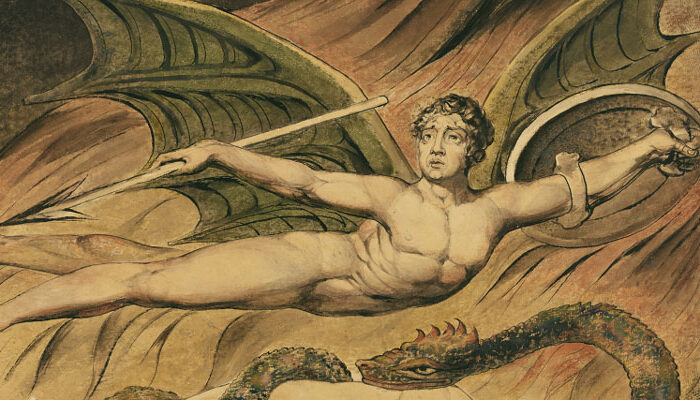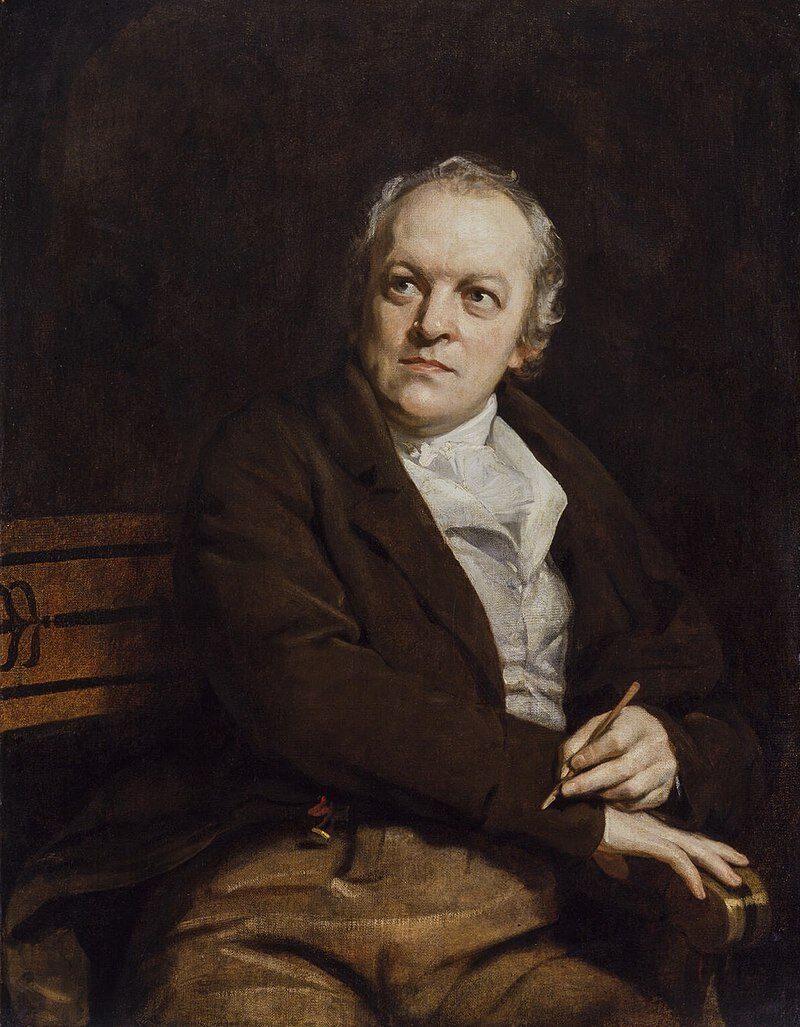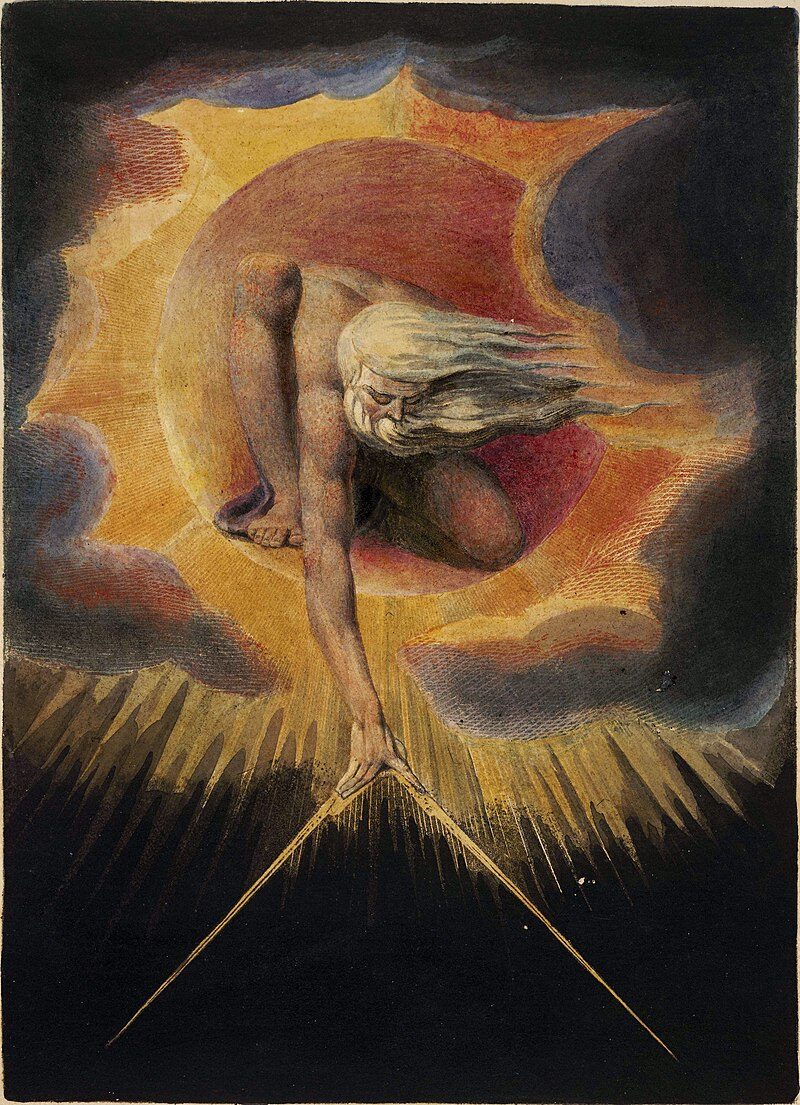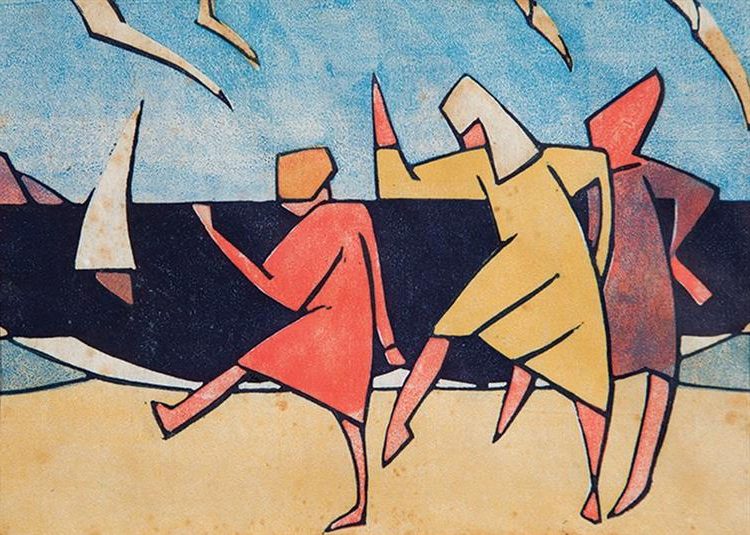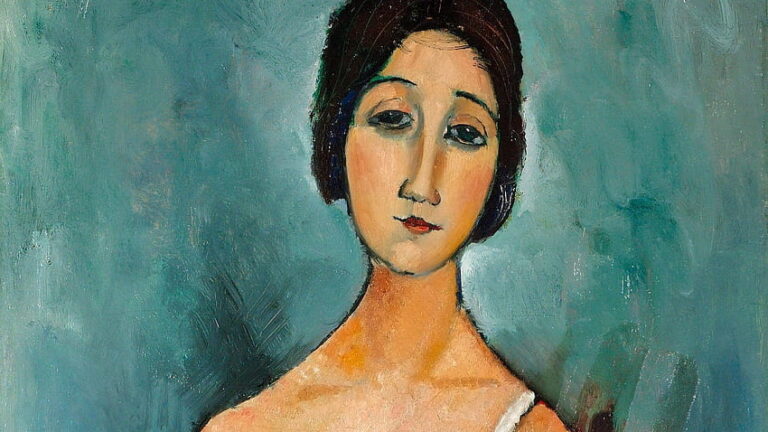William Blake Painter: Visionary Artist of the Romantic Era
Born: 28 November 1757, Soho, London, England
Death: 12 August 1827, Charing Cross, London, England
Art Movement: Romanticism
Nationality: British
Influenced By: Emanuel Swedenborg
Institution: Royal Academy of Arts
William Blake Painter: Visionary Artist of the Romantic Era
Biographical Overview
William Blake was a visionary artist, poet, and printmaker whose unique perspective on religion, politics, and human nature shaped his distinctive works. His journey from modest beginnings to becoming a revolutionary creative force reveals the development of his extraordinary artistic vision.
Early Life and Education
William Blake was born in London on November 28, 1757, to James Blake, a hosier, and Catherine Blake. His family lived near Golden Square in Soho, a bustling neighborhood in the heart of London.
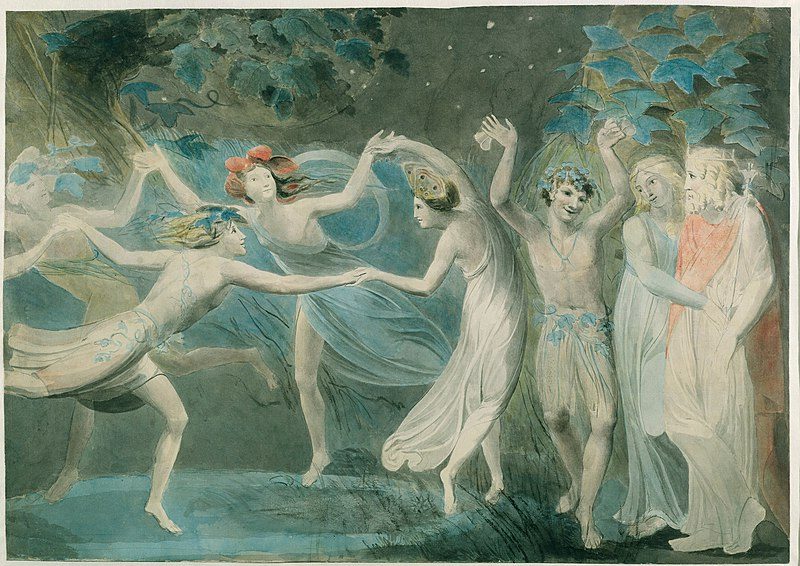
Oberon, Titania and Puck with Fairies Dancing (1786)
At the young age of ten, Blake began his formal artistic training at Henry Pars’ drawing school in the Strand. This early education laid the foundation for his exceptional draftsmanship.
Blake showed early signs of unusual perception. He reportedly experienced visions throughout his life, beginning in childhood. These mystical experiences would later influence his artistic and poetic works significantly.
His formal education remained limited, as he never attended traditional schools. Instead, he developed his talents through apprenticeship. At fourteen, Blake began an apprenticeship with engraver James Basire, where he mastered the technical skills of engraving.
Artistic Development and Vision
Blake’s artistic vision emerged as highly original and deeply personal. He rejected many conventions of his time, including the formal training methods of the Royal Academy of Arts, which he briefly attended but found too restrictive.
He developed innovative printmaking techniques, most notably his “illuminated printing” method. This allowed him to combine text and images on a single plate, creating unified works of remarkable originality.
Blake’s paintings and engravings reflected his spiritual beliefs and imagination rather than the prevailing artistic styles. His work featured bold lines, dynamic figures, and symbolic imagery that often depicted biblical and mythological themes.
Though largely unrecognized during his lifetime, Blake’s unique artistic approach combined technical precision with visionary imagination. His paintings exhibited vibrant colors and dramatic compositions that broke from traditional artistic conventions of the 18th century.
Artistic Contributions and Style
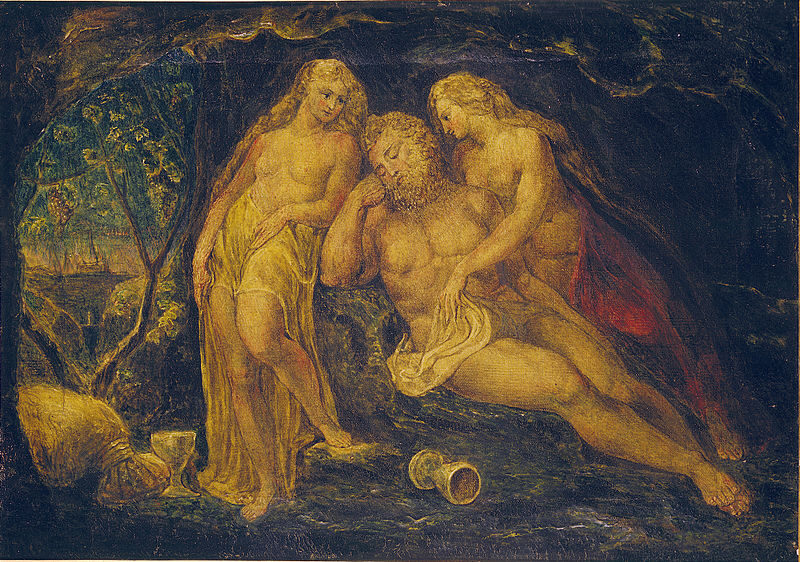
Lot and His Daughters (c. 1800) by William Blake
William Blake developed unique artistic techniques and a visionary style that combined poetry with visual art. His innovations in printmaking and illustration created works of striking originality that challenged the artistic conventions of his time.
Influence on British Art
Blake stands as a pivotal figure in British art history, though his genius wasn’t fully recognized during his lifetime. His visionary paintings displayed supernatural figures and biblical scenes with a distinctive personal mythology.
The artist rejected conventional techniques taught at the Royal Academy, instead developing his own visual language. His works feature bold outlines, vibrant colors, and dynamic compositions that express spiritual visions rather than merely depicting physical reality.
Blake’s influence extended to later Romantic artists and eventually to the Pre-Raphaelites. His combination of imagination and technical skill created a visual language that challenged rational Enlightenment thinking.
His paintings like those of “The Great Red Dragon” series showcase his mature style, expressing mythological imagination through powerful imagery.
Graphic Techniques and Printmaking
Blake revolutionized printmaking through his innovative “relief etching” technique developed in 1788. This method allowed him to combine text and images on a single plate—a breakthrough in book production.
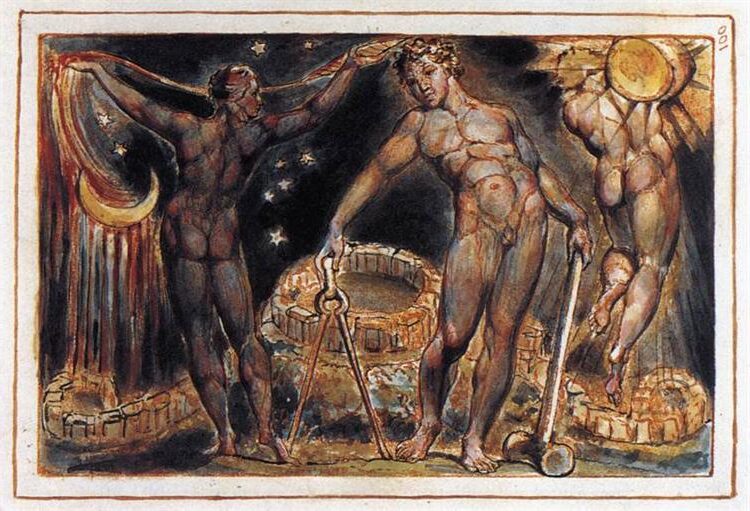
Los (1804–1820) by William Blake
His process involved:
- Writing and drawing on copper plates with acid-resistant materials
- Etching away unprotected areas to create raised surfaces
- Applying ink to the raised portions
- Printing by hand-pressing paper onto the plate
This technique gave Blake complete artistic control over his publications. He used it to produce his illuminated books, including “Songs of Innocence and Experience” and “The Book of Job.”
Blake’s printmaking approach freed him from commercial publishers and enabled the unified presentation of his poetry and illustrations as integrated artistic works.
Poetry and Visual Art Fusion
Blake achieved a remarkable synthesis between poetry and visual art, creating what he called “illuminated books.” These works present text surrounded by intricate illustrations that don’t merely depict the poems but expand their meanings.
In “Songs of Innocence and Experience,” Blake’s vibrant illustrations complement his verses about childhood, spirituality, and social criticism. The visual elements add layers of symbolic meaning to the poetic text.
His fusion of media challenged traditional boundaries between literary and visual arts. Words and images work together to create a multisensory experience that engages readers more deeply than either medium alone could achieve.
Blake believed art should express spiritual truths. His integrated approach to poetry and visual art created works that communicate on multiple levels simultaneously—intellectual, emotional, and spiritual.
Major Works and Legacy

Newton (1795) by William Blake
William Blake created a remarkable body of visual and literary art that, while underappreciated during his lifetime, has grown immensely in influence and recognition. His innovative printmaking techniques and powerful symbolic imagery established him as one of England’s most original creative minds.
Iconic Paintings and Illustrations
Blake’s visual art encompassed various techniques, most notably his self-invented relief etching method that allowed him to combine text and images. His illustrations for the Bible and “The Book of Job” showcase his distinct style and profound symbolism.

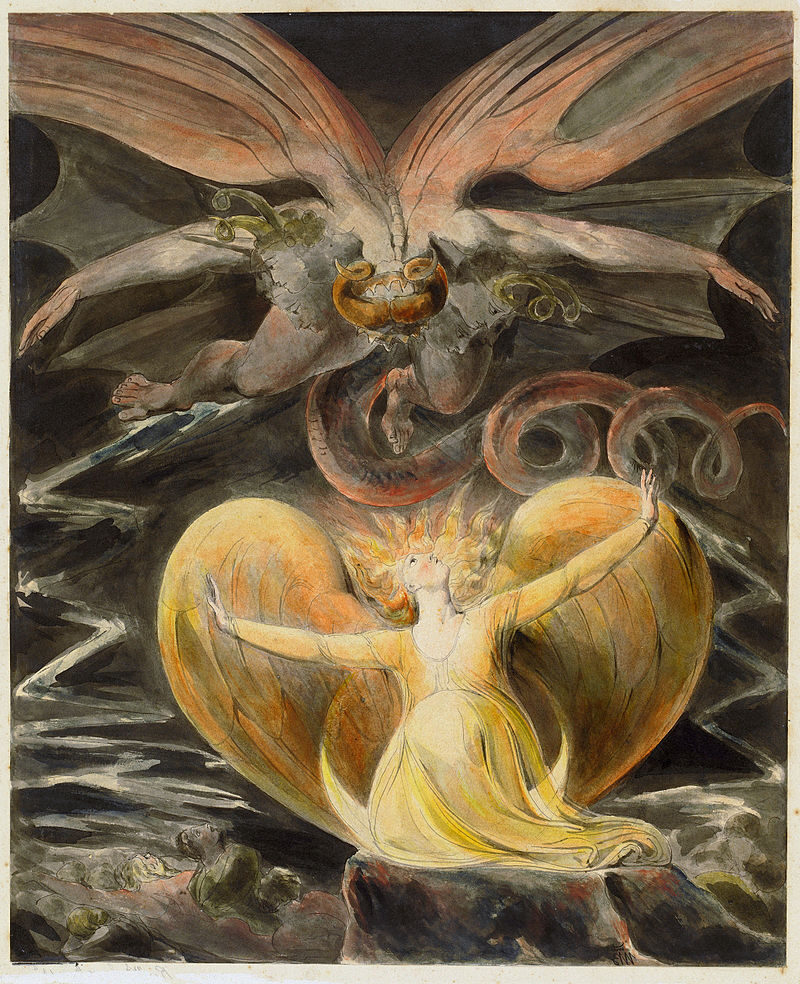
One of his most recognized works is “The Ancient of Days” (1794), depicting God measuring the universe with a compass. The piece exemplifies Blake’s mastery of color and composition.
Blake’s watercolor series illustrating Milton’s “Paradise Lost” and Dante’s “Divine Comedy” demonstrate his ability to transform literary works into powerful visual narratives.
His paintings often feature radiant colors and precise linework, contrasting themes of innocence and experience that mirror his literary explorations.
Literary Contributions
Blake’s literary works were inseparable from his visual art, with most of his poems accompanied by illuminated designs. “Songs of Innocence and of Experience” (1794) stands as his most accessible poetic collection, exploring contrasting states of human existence.
His prophetic books, including “Milton” and “Jerusalem,” combine complex mythology with social critique. These works reveal Blake’s innovative approach to narrative and spiritual themes.
Blake drew inspiration from Shakespeare, the Bible, and his own visionary experiences. His writing challenged conventional religious thought while creating a unique symbolic language.
Many of his poems, like “The Tyger” and “London,” have become staples of English literature, admired for their linguistic precision and philosophical depth.
Exhibitions and Recognition Posthumously
Though largely unrecognized during his lifetime, Blake’s reputation grew steadily after his death in 1827. The first major exhibition of his work occurred in 1913 at the National Gallery of Art, introducing his genius to wider audiences.

Minotaur by William Blake
Modern exhibitions have drawn record crowds, including the Tate Britain’s 2019 show featuring over 300 original works—the largest Blake exhibition in nearly two decades.
Blake’s influence extends beyond art into music, literature, and popular culture. His work has inspired countless artists, writers, and musicians seeking to blend visual and verbal expression.
Today, major museums worldwide, including the British Museum and the Metropolitan Museum of Art, prominently display his works. His unique vision continues to resonate with contemporary audiences facing similar questions about war, science, and spiritual identity.
Frequently Asked Questions
William Blake’s life and work span many artistic achievements across poetry, painting, and printmaking. His visionary approach to art has made a lasting impact, with several notable works and quotes still celebrated today.
What are the most famous poems by William Blake?
Blake’s most famous poems include “The Tyger” and “The Lamb” from his collection “Songs of Innocence and Experience.” These poems explore the contrasting states of human existence.
“The Marriage of Heaven and Hell” showcases his provocative religious ideas and innovative writing style. His epic poems “Milton” and “Jerusalem” display his complex mythological system.
“London” offers a powerful critique of urban inequality during the Industrial Revolution. “Auguries of Innocence” contains his famous opening lines: “To see a World in a Grain of Sand…”
Can you provide a brief biography of William Blake?
William Blake was born in London on November 28, 1757. He showed artistic talent early in life and was apprenticed to an engraver at age 14.
Blake married Catherine Boucher in 1782, who became his devoted assistant. Though trained as an engraver, he developed his own innovative printing techniques to create his illuminated books.
Despite his creative genius, Blake struggled financially throughout his life. He died on August 12, 1827, relatively unknown, but has since become recognized as a pioneering figure in both visual art and poetry.
What are some of the notable works of William Blake?
Blake’s “Songs of Innocence and of Experience” (1794) combines poetry and visual art in a groundbreaking way. Each poem is presented with a hand-colored illustration, showing his mastery across mediums.
His series of watercolors illustrating Dante’s “Divine Comedy” showcases his unique vision. “The Ancient of Days” depicts God as an architect measuring the universe and is one of his most recognized images.
Blake’s illustrations for the Book of Job demonstrate his biblical interpretation and artistic skill. His “Great Red Dragon” series, inspired by Revelation, features powerful, mythological imagery.
What were the circumstances surrounding William Blake’s death?
Blake died at his home in London on August 12, 1827, at the age of 69. He was working on Dante illustrations on his deathbed, showing his dedication to art until the end.
Witnesses reported that Blake died joyfully, singing songs about the visions he saw. His final words were reportedly about the heaven he believed awaited him.
Blake died in poverty and was buried in an unmarked grave at Bunhill Fields in London. Only a small group of devoted friends attended his funeral, though his reputation would grow significantly after death.
What are some well-known quotes attributed to William Blake?
“To see a world in a grain of sand and heaven in a wild flower, hold infinity in the palm of your hand and eternity in an hour.” This line from “Auguries of Innocence” captures Blake’s visionary perspective.
“The road of excess leads to the palace of wisdom.” This provocative statement from “The Marriage of Heaven and Hell” reflects Blake’s belief in the value of passionate experience.
“What is now proved was once only imagined.” This quote highlights Blake’s faith in human creativity and imagination as powerful forces.
Which two artworks are considered major contributions of William Blake?
“The Ancient of Days” (1794) stands as one of Blake’s most iconic images. The painting depicts Urizen, Blake’s creator deity, reaching down with a compass to create order from chaos.
“Newton” (1795-1805) shows the scientist as a divine geometer, measuring the universe. This work reflects Blake’s complex view of Enlightenment thinking. He appreciates scientific precision while questioning its spiritual limitations.

